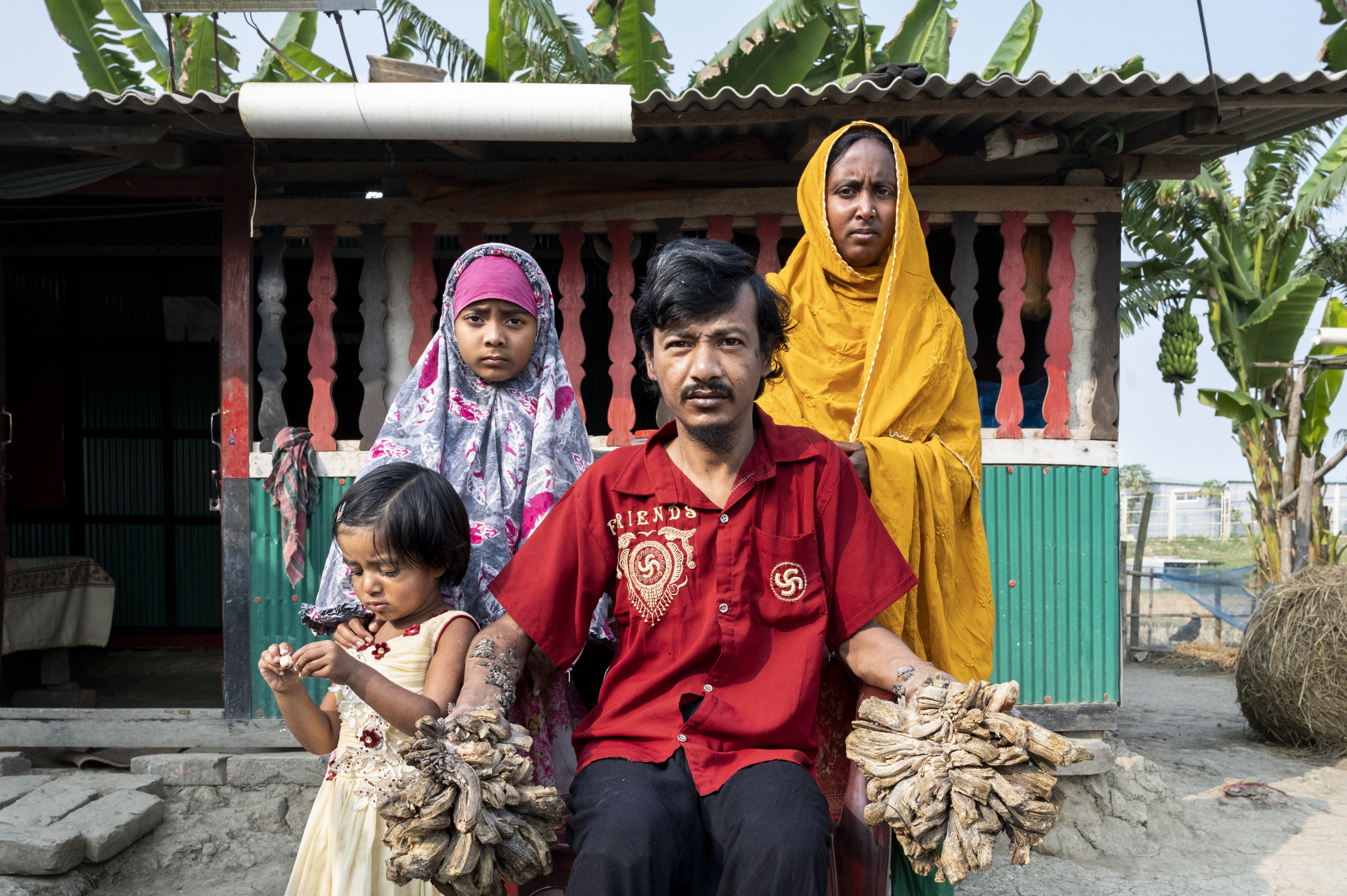
- After his story went global, Abul Bajandar was able to get treatment and hold his daughter for the first time. Then his warts grew back bigger than ever
Abul Bajandar feared he would never be able to hug his daughter, Jannatul. It was made impossible by the gigantic warts covering his hands and feet, huge protuberances with the texture of tree bark growing especially big around fingers and toes, but also on the arms and legs.
These are an extremely rare symptom of his extremely rare condition, epidermodysplasia verruciformis. There are fewer than 10 documented cases worldwide and, since there is no known cure, Bajandar, 35, had lost all hope and was barely surviving as a beggar in the southwestern Bangladeshi city of Khulna.
“People used to give me some money to get their photo taken with me,” he recalls. “I was like a monkey in a zoo getting peanuts from visitors.”
Then, in 2015, a local journalist reported on Bajandar’s plight, and some media outlets further afield, such as the Daily Mirror and CNN, picked up the story. Suddenly, Bajandar was international news, with the documentary series Body Bizarre dedicating a whole episode, The Tree Man of Bangladesh, to him.
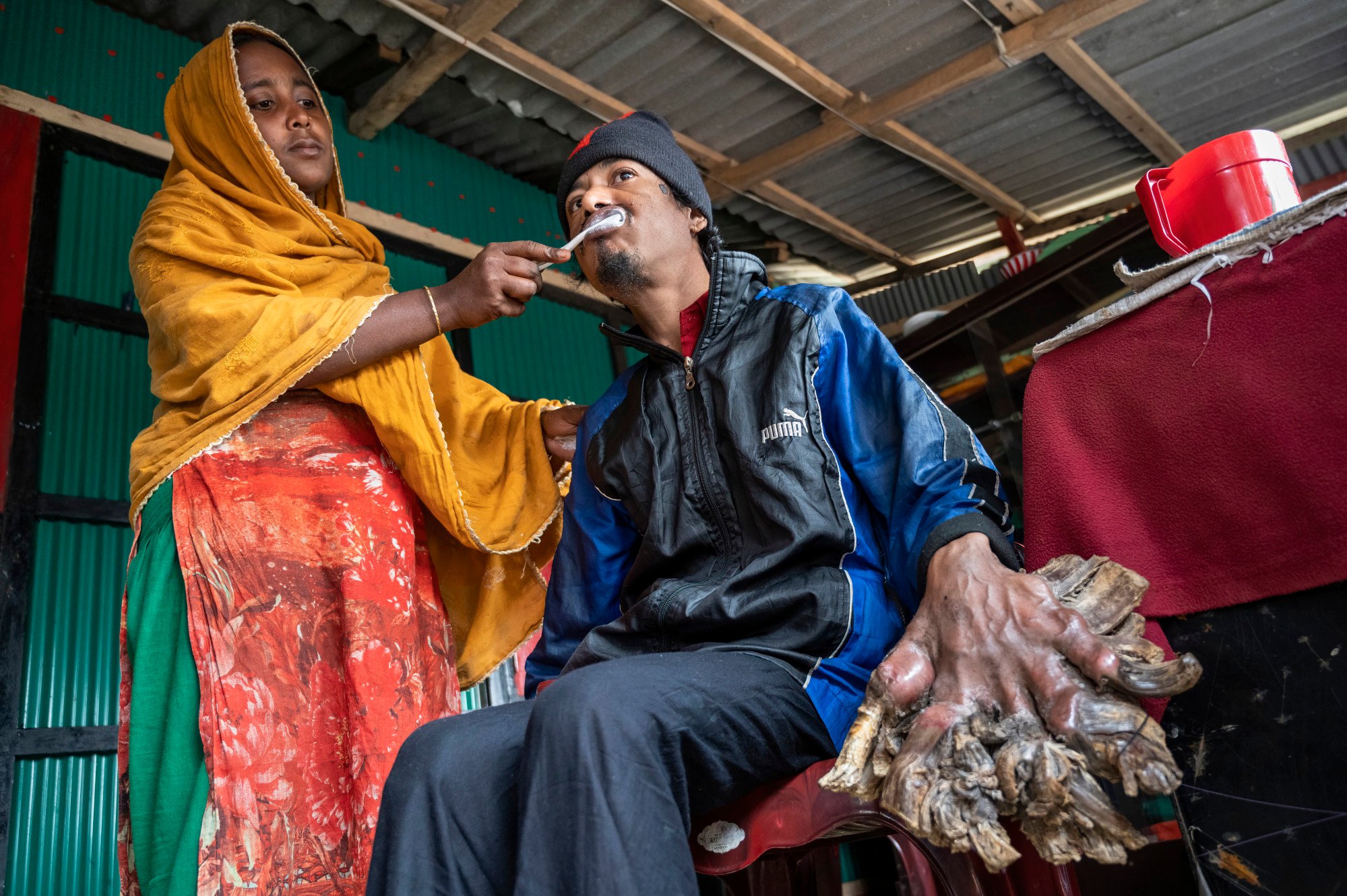
Even the country’s prime minister, Sheikh Hasina, took an interest, gathering the best surgeons in the country to try to remove the warts and the branch-like carcinomas covering Bajandar’s hands and feet.
In early 2016, Bajandar moved to the Dhaka Medical College Hospital with his wife, Halima Khatun, and three-year-old Jannatul. There, plastic surgeon Samanta Lal Sen, who was tasked with a series of surgeries to free Bajandar’s hands and feet, warned that success was not guaranteed.
‘She said I should just kill myself’: Hong Kong teacher with rare condition
A few months later, however, Bajandar’s dream came true, and he was able to hold his daughter for the first time.
“To feel her skin made me the happiest father in the world,” he says, seeking shelter from the sweltering, damp heat in the porch of the humble metal shack that the family calls home. Everything is crammed into one concrete-floor room: the kitchen fire, a couple of hard wooden beds and a table.
The wall overlooking a dry rice field is coloured with the red and green of the Bangladeshi flag, but Bajandar’s shabby home is not what one would expect for the man who had become a national success story and source of pride.

Not that he cared about that in 2018, when the surgeries came to an end and, for the first time since his teenage years, he could walk without pain and use his hands with dexterity. A series of photographs on his phone reflect that brief period of normality.
Pictures of a happy hug with Jannatul, a meal holding a spoon or running in the street are glimpses of a life that did not last long.
“After a couple of months, the warts began to grow again,” recalls Bajandar, as his wife and their two daughters, now aged two and 10, mill around. Khatun is busy watering the plants while the children look up at their father, hearing the sadness in his voice.

Despite the couple’s dire situation, Bajandar remains eternally grateful to the Dhaka Medical College Hospital for the care it provided free of charge between 2016 and 2018. His fame even granted him the luxury of a private room in a facility where many patients lie on the floor or in rusty bunk beds.
The long series of procedures rid him of almost 6kg (13lb) of warts, and showed the world that surgery could achieve results. But in the absence of a cure, doctors had warned that the treatment could be lifelong.
“I was completely aware that it is a genetic disease and that it has no cure,” he says, showing an image of his hand, taken five years ago and free of protuberances. “But I always hoped it wouldn’t reappear and I never thought it would strike again so soon and with greater virulence.”

Due to the Covid-19 pandemic, Bajandar had to return to his native Khulna and stop treatment. After just a few months, the warts started to reappear, and in a matter of three years they were as large as they had been when he first went under the knife.
Now, his limbs are once again hidden under warts, which have grown far larger than those of seven years ago, especially on his feet.
“Although we tie them with a thread to prevent them from growing and spreading open, there is no way to contain the disease,” says Khatun as she performs this delicate wrapping procedure, aware of her husband’s expressions of pain.
I can no longer go to the city to beg because walking causes me so much pain that I am bedridden for three days afterwardsAbul Bajandar
The problem is that the warts grow in all directions, causing muscular and bone issues. His hands open beyond human limits, and his feet arch in such a way that walking is torture. Every time Bajandar takes a step, his weight stretches his feet, breaking the skin and cutting it open.
“As if that weren’t enough, I constantly get infected wounds, the pain is unbearable,” groans Bajandar, who cannot function without his daily dose of antibiotics and painkillers. “I need higher doses every time and they cost a lot of money.”
Despite all the medication, the little parts of Bajandar’s fingers that are visible are swollen and covered in cuts.

Bajandar feels sentenced to life in a prison made from his own body. “I am useless. I cannot work to support the family and fully depend on my wife, who earns some money as a seamstress and by raising ducks,” he says.
“Some poor neighbours have even left their goat for us to take care of because it just gave birth. It’s humiliating. We don’t even have our own cattle.”
Unable to bear this situation any longer, he begs doctors at the local hospital, and even at private clinics, to chop off his hands and feet every time he has an appointment.
“I know there are people who live with multiple amputations thanks to the many prostheses available,” he says. “That’s way better than living in constant pain, but my requests are always denied.”
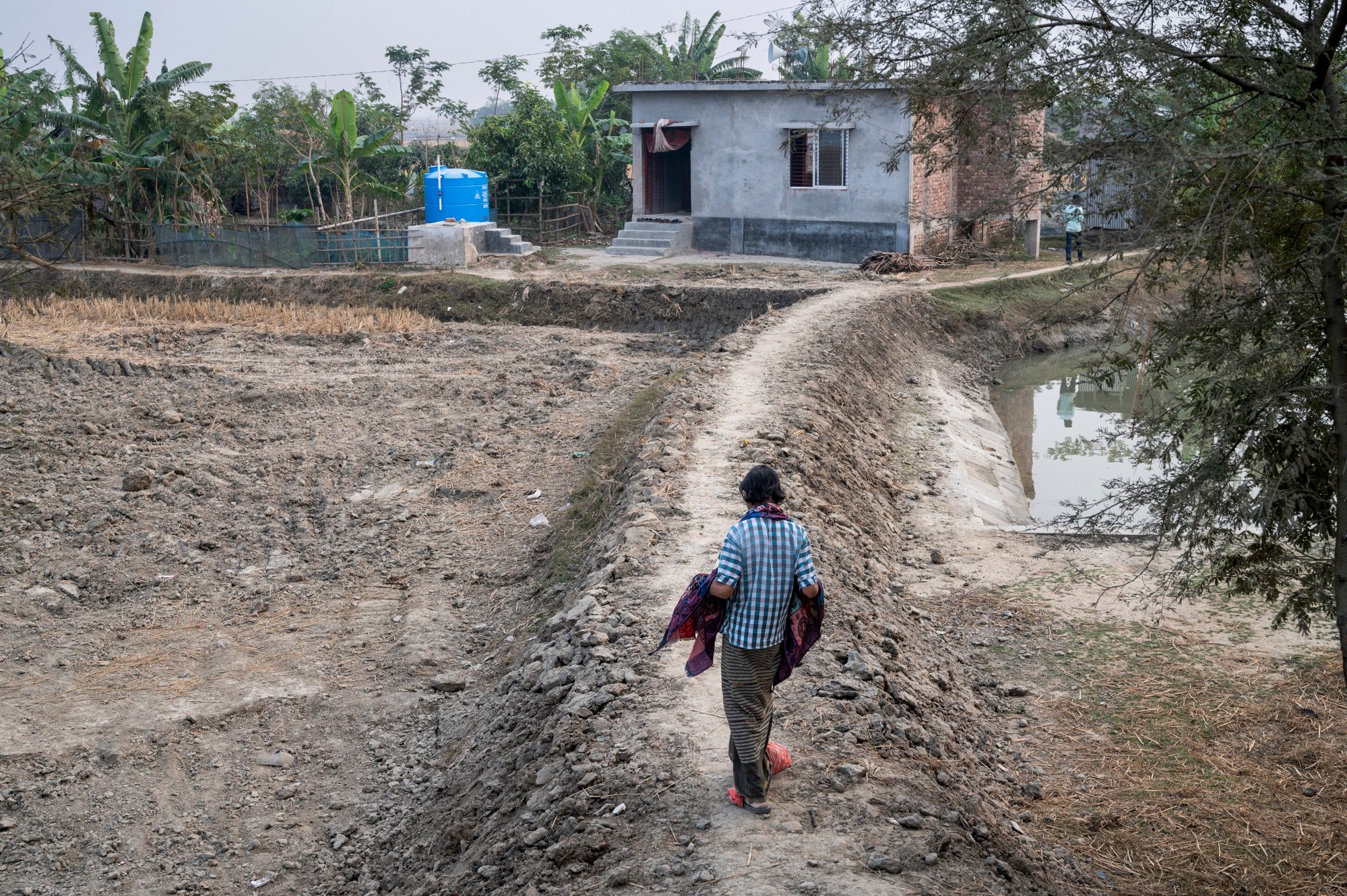
Bajandar has not yet gathered enough courage to use the knife himself, but says, “Every one or two months, my wife cuts my warts a little. Just enough so I can still walk and wear my clothes. I have to soak my hands and feet in hot water for a long time to soften them, and even then I feel a lot of pain. I don’t rule out doing something crazy one day.”
His life is mostly confined to two places: the couple’s bed, where he spends most of his time scrolling on his phone, which “at least is responsive to the warts”, and the red plastic chair where he sits on the porch when the sun turns the house into an oven.
How anxiety and depression raise the risk of 29 physical health conditions
Apart from these, there is only the short walk through a rice field to the small teahouse where he kills time some afternoons. Envy eats away at him watching others play carrom, a combination of billiards and shuffleboard, using their index finger or thumbs to strike the little discs across the board and to the holes in the corners.
“I can no longer go to the city to beg because walking causes me so much pain that I am bedridden for three days afterwards.”
Before, he could earn up to 3,000 taka (US$28) this way. “I had to endure the humiliation of those who paid taking selfies and laughing at me, but at least I could feed my family.”
Bajandar now covers his hands and feet with scarves to hide the warts and avoid uncomfortable stares.

Khatun’s life is not much easier. The couple gets no social benefits and she bears the weight of the family on her shoulders, unusual in Muslim countries.
“I hardly earn 1,000 taka a month working with my sewing machine. Last year we earned another 2,500 selling some chickens and a duck,” she says.
“We basically survive thanks to the vegetables in the garden, fish from the pond and some donations. But it is utter misery.”
She has tailored Bajandar’s clothes, cutting the sleeves open and adding zips so that he can wear shirts and jumpers. To protect his feet, she has tweaked the soles of sandals and ties them around the warts.
“I can’t say that I didn’t know what I was getting into because we started our relationship when his illness had already manifested,” says Khatun.
We can do no more. Nobody can do more. Our lives are already overHalima Khatun, Abul Bajandar’s wife
The beginning of their relationship, a little over a decade ago, was not easy. Her family opposed the marriage, believing Bajandar’s prospects would be impeded by his warts, however minute they were compared with now. Khatun says only the birth of their first daughter forced her parents to change their minds.
“I fell in love out of pity,” says Khatun. “I saw him as a good person who needed care, and back then he was still making some money in the streets. I didn’t think he would end up depending completely on me. Now I feel ashamed when I am with my parents because they warned me it was a bad idea.”
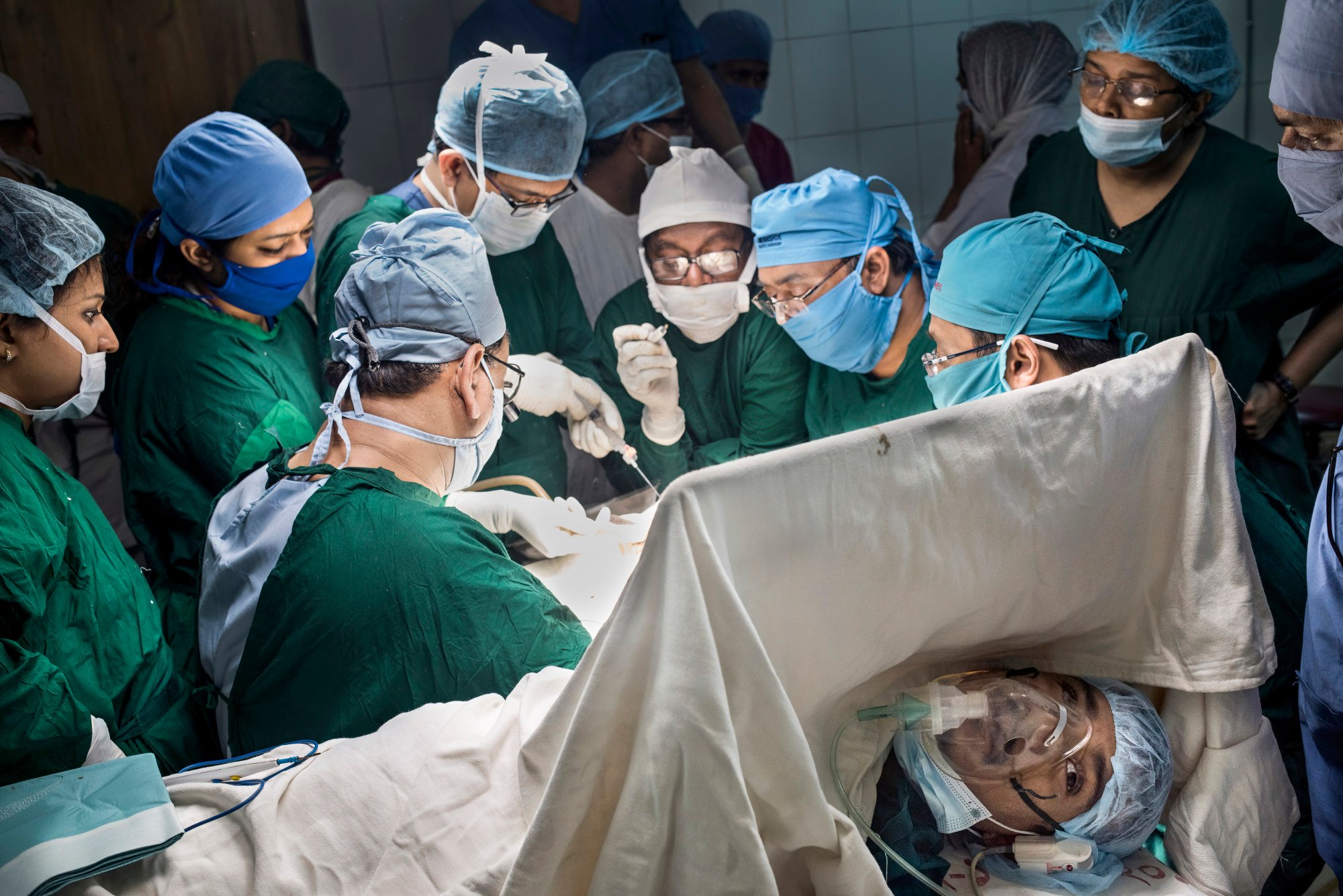
But it never crossed her mind to abandon Bajandar, the way Dede Koswara’s wife did in Indonesia. He was another of the few “tree men” and also went under the knife. He died soon after Bajandar began his treatment.
“Leaving would be devastating for him,” says Khatun. Her life is now focused on taking care of her husband and providing their daughters with the tools necessary to aspire to a better life.
“They had a few tests done and the doctors confirmed that both appear to be free from the disease,” she sighs in relief. “So we will do everything possible to give them the education we didn’t have.”

Both Khatun and Bajandar are illiterate. To break the cycle of poverty, Jannatul and Shayera must be educated. It is not easy for their parents to raise the monthly school fee of 1,000 takas for the eldest, but her future success in life is the only hope they have.
And surgeon Lal Sen wants to help the family. “Bajandar should live in Dhaka and get in the operating room every now and then to remove the warts. This way, he will be able to lead a pretty normal life,” says the doctor in charge of his treatment, which has been always provided by the government free of charge despite Bajandar’s lack of insurance.
But Bajandar refuses. He says he will not be subjected to the nightmare of surgery again.
“It would mean moving to the capital, and I don’t think I can give my wife and daughters a good life there because we don’t have an education,” he says.
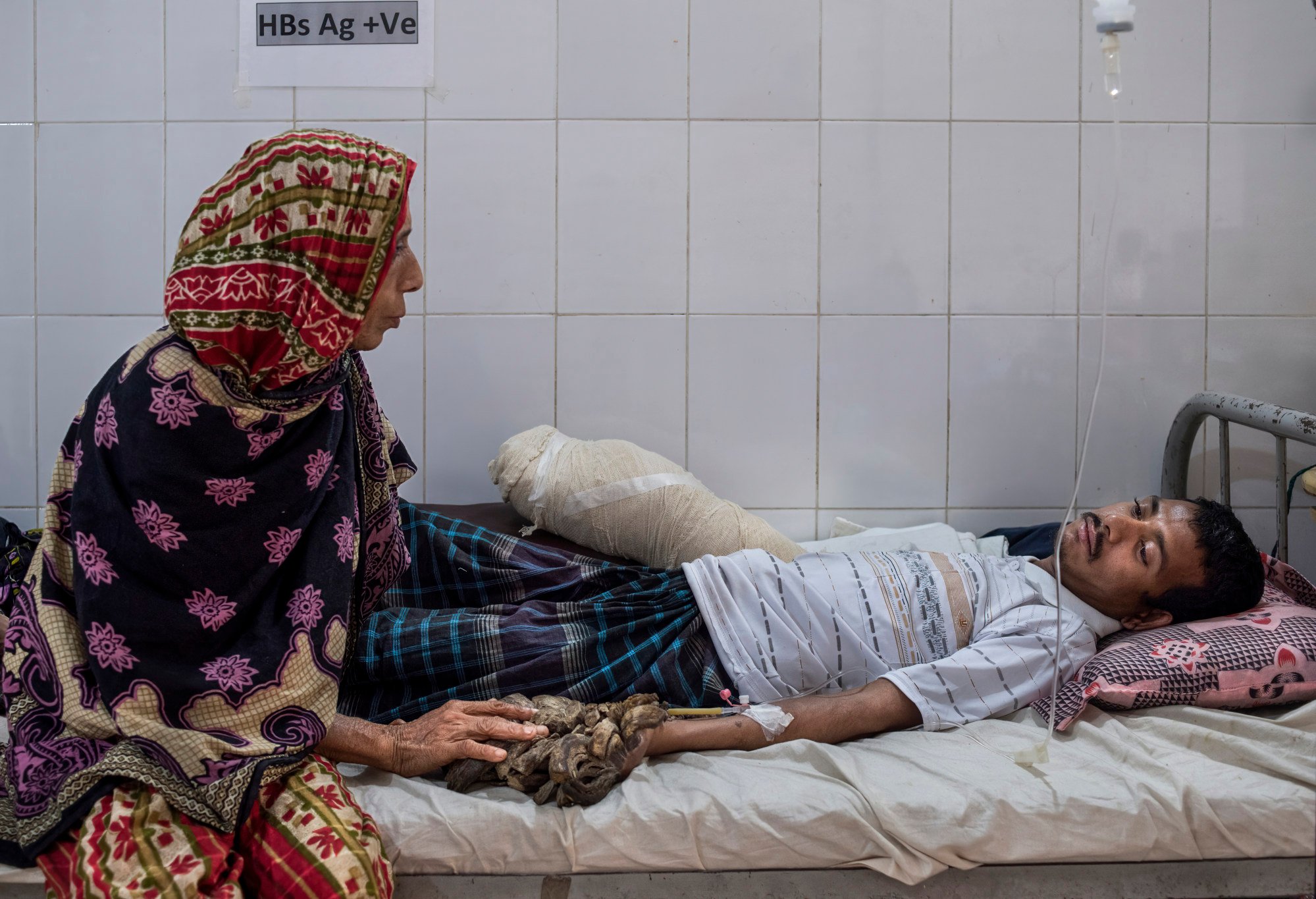
In Khulna, at least, they have a small house built on donated land. “Poverty in rural areas is always preferable to urban misery.”
A year ago, Bajandar received a visit from an Islamic holy man who offered to travel from Dubai to try to cure his disease using magic: “He touched me and blew on me, sprayed me with holy water and we prayed together. I hoped it would work.”
It did not.

“The only thing left to do is to seek treatment abroad,” says Bajandar, launching a desperate appeal to specialists from around the world to take pity and try to cure him. “I’ve heard that genetic therapy may work.”
But Lal Sen cannot provide false hope. “Going abroad will make no difference,” he says, “because this is a genetic disease with no cure.”
Both he and Bajandar confirm that the hospital offered Bajandar and Khatun janitor and cleaner jobs, so they could live in Dhaka. But “we can do no more. Nobody can do more”, says Khatun. “Our lives are already over.”

